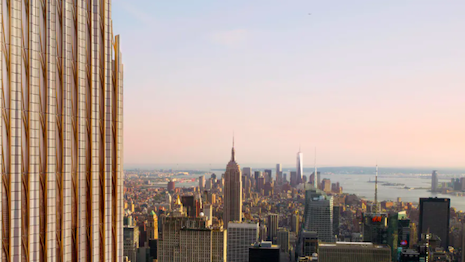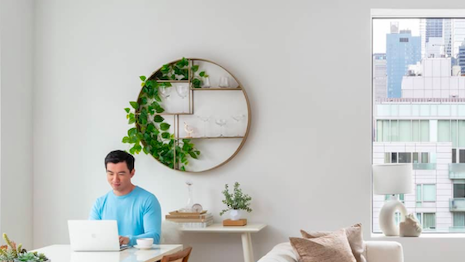 Prospective buyers are considering leaving urban centers for more space. Image credit: Knight Frank
Prospective buyers are considering leaving urban centers for more space. Image credit: Knight Frank
The coronavirus pandemic has impacted the near-term supply and long-term design of homes around the world as luxury homebuyers and developers adapt to changing lifestyles and economic realities.
Supply has shrunk in many markets, and housing priorities have shifted for many prospective and current homeowners. Months of quarantine and lockdowns have people desiring more space, whether in the form of larger homes or more land.
“While it is still too early to confirm the lasting impact of the pandemic on the development landscape, it is clear that it has accelerated pre-existing trends and prompted new ideas for current and future developments,” said Flora Harley, associate at Knight Frank, in a statement.
Market shifts
According to an analysis from Redfin, 40 of the top 50 metro areas in the United States have seen supply growth rate declines since February, the month prior to pandemic-related shutdowns. Record-low mortgage rates have increased homebuyer demand, but fewer owners are putting their homes up for sale.
With more Americans considering moves from expensive coastal cities to more suburban and affordable areas, this has exacerbated supply issues in those markets.
“There's a perfect storm in the housing market right now,” said Jason Allen, Baltimore, MD-based market manager at Redfin. “People are more comfortable staying in their homes; they're investing in pools, offices and better backyards instead of moving.
“But at the same time, there are suddenly a lot more people who want those amenities, so we're seeing this huge wave of buyers,” he said. “We’re meeting far more clients who want to buy a home than sell a home.”
 San Francisco is facing an oversupply of home listings, an exception in today's real estate market. Image credit: Redfin
San Francisco is facing an oversupply of home listings, an exception in today's real estate market. Image credit: Redfin
In July, almost 24 percent of Redfin.com users from San Francisco and 34 percent of users from New York City were searching for homes in different metro areas. New listings in San Francisco increased 77 percent year-over-year in July, but pending sales only rose 16.5 percent indicating an oversupply in the market.
Redfin also reported that sales of large homes, those of at least 3,000 square feet, were up 21.2 percent year-over-year in July.
An increase in residential construction projects is one way to improve inventory issues, in the U.S. and elsewhere. After initial construction delays due to supply chain and safety concerns, luxury real estate developers are back to work.
According to a Knight Frank survey of 160 global developers across 22 countries, more than four in 10 have made changes to designs that were previously “completed.” For instance, 75 percent of developers are more likely to consider advanced telecommunications and home office space for remote workers.
Elsewhere, developers are adapting existing buildings to meet changing demands. Manhattan’s luxury condominium Charlie West is looking to entice new buyers with a custom home-office design package for the price of $10,000.
 New buyers at one luxury condominium will receive a custom home office. Image credit: Charlie West
New buyers at one luxury condominium will receive a custom home office. Image credit: Charlie West
These offerings reflect lifestyle changes brought on by the pandemic.
In August, Knight Frank’s Global Buyer Survey found that almost two-thirds of clients believe they are more likely to work from home even after restrictions lift.
Prospective luxury homebuyers are also more interested in waterfront and rural properties. Even those who are not moving to more rural areas are placing more value on large outdoor areas and increased privacy (see story).
According to Knight Frank, 41 percent of developers said they would be looking to develop in a mix of locations, cities, second-home and rural areas.
Industry outlook
Inventory issues have also driven home prices up as frenzied buyers continue to compete for limited listings.
According to Redfin, active listings are at an all-time low. At the same time, the average sale-to-list price ratio, which measures how close homes are selling to their asking prices, climbed a percentage point from 2019 to 99.3 percent.
Price growth has been more modest for luxury real estate, however.
Per Knight Frank’s Prime Global Cities Index for Q2 2020, cities in Australia and North America showed the most resilience in home prices overall in the three months to June 2020.
Brisbane, Perth, Sydney and the Gold Coast all saw increases in prices year-over-year and quarter-over-quarter. Melbourne was an exception, with prime prices dipping 1.0 percent from Q1 to Q2 2020.
In the United States and Canada, Vancouver, Toronto, Miami, Los Angeles and San Francisco all saw annual and quarterly growth in prime real estate prices (see story).
More than 150 residential real estate purchases above $10 million have been completed since COVID-19 lockdowns began in March, showing the strength of the super-prime market.
According to Knight Frank, super-prime residential markets outperformed expectations but transaction levels for H1 2020 are well below levels from the same time period in 2019. The research is based on residential sales in 12 super-prime markets around the world (see story).
